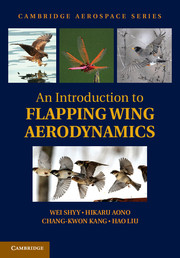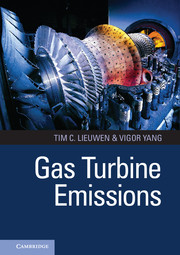Refine search
Actions for selected content:
5487 results in Thermal-fluids engineering
9 - Partially Premixed and Premixed Aero Engine Combustors
- from Part 3 - Case Studies and Specific Technologies: Pollutant Trends and Key Drivers
-
-
- Book:
- Gas Turbine Emissions
- Published online:
- 05 June 2013
- Print publication:
- 08 July 2013, pp 237-289
-
- Chapter
- Export citation
8 - Emissions from Oxyfueled or High-Exhaust Gas Recirculation Turbines
- from Part 2 - Fundamentals and Modeling: Production and Control
-
-
- Book:
- Gas Turbine Emissions
- Published online:
- 05 June 2013
- Print publication:
- 08 July 2013, pp 209-234
-
- Chapter
- Export citation
Frontmatter
-
- Book:
- Gas Turbine Emissions
- Published online:
- 05 June 2013
- Print publication:
- 08 July 2013, pp i-vi
-
- Chapter
- Export citation
Part 2 - Fundamentals and Modeling: Production and Control
-
- Book:
- Gas Turbine Emissions
- Published online:
- 05 June 2013
- Print publication:
- 08 July 2013, pp 121-122
-
- Chapter
- Export citation

An Introduction to Flapping Wing Aerodynamics
-
- Published online:
- 05 June 2013
- Print publication:
- 19 August 2013

Gas Turbine Emissions
-
- Published online:
- 05 June 2013
- Print publication:
- 08 July 2013
4 - Comparisons of the REA with Fickian-type drying theories, Luikov's and Whitaker's approaches
-
- Book:
- Modelling Drying Processes
- Published online:
- 05 May 2013
- Print publication:
- 23 May 2013, pp 169-211
-
- Chapter
- Export citation
2 - Reaction engineering approach I
-
- Book:
- Modelling Drying Processes
- Published online:
- 05 May 2013
- Print publication:
- 23 May 2013, pp 34-120
-
- Chapter
- Export citation
Historical background
-
- Book:
- Modelling Drying Processes
- Published online:
- 05 May 2013
- Print publication:
- 23 May 2013, pp xxx-xxxviii
-
- Chapter
- Export citation
Preface
-
-
- Book:
- Modelling Drying Processes
- Published online:
- 05 May 2013
- Print publication:
- 23 May 2013, pp xxvii-xxix
-
- Chapter
- Export citation
Modelling Drying Processes - Title page
-
-
- Book:
- Modelling Drying Processes
- Published online:
- 05 May 2013
- Print publication:
- 23 May 2013, pp iii-iii
-
- Chapter
- Export citation
Index
-
- Book:
- Modelling Drying Processes
- Published online:
- 05 May 2013
- Print publication:
- 23 May 2013, pp 212-214
-
- Chapter
- Export citation
3 - Reaction engineering approach II
-
- Book:
- Modelling Drying Processes
- Published online:
- 05 May 2013
- Print publication:
- 23 May 2013, pp 121-168
-
- Chapter
- Export citation
Modelling Drying Processes - Half title page
-
- Book:
- Modelling Drying Processes
- Published online:
- 05 May 2013
- Print publication:
- 23 May 2013, pp i-ii
-
- Chapter
- Export citation
Contents
-
- Book:
- Modelling Drying Processes
- Published online:
- 05 May 2013
- Print publication:
- 23 May 2013, pp v-viii
-
- Chapter
- Export citation
Tables
-
- Book:
- Modelling Drying Processes
- Published online:
- 05 May 2013
- Print publication:
- 23 May 2013, pp xxvi-xxvi
-
- Chapter
- Export citation
Figures
-
- Book:
- Modelling Drying Processes
- Published online:
- 05 May 2013
- Print publication:
- 23 May 2013, pp ix-xxv
-
- Chapter
- Export citation
Copyright page
-
- Book:
- Modelling Drying Processes
- Published online:
- 05 May 2013
- Print publication:
- 23 May 2013, pp iv-iv
-
- Chapter
- Export citation
1 - Introduction
-
- Book:
- Modelling Drying Processes
- Published online:
- 05 May 2013
- Print publication:
- 23 May 2013, pp 1-33
-
- Chapter
- Export citation
Frontmatter
-
- Book:
- High Accuracy Computing Methods
- Published online:
- 05 January 2014
- Print publication:
- 16 May 2013, pp i-iv
-
- Chapter
- Export citation
